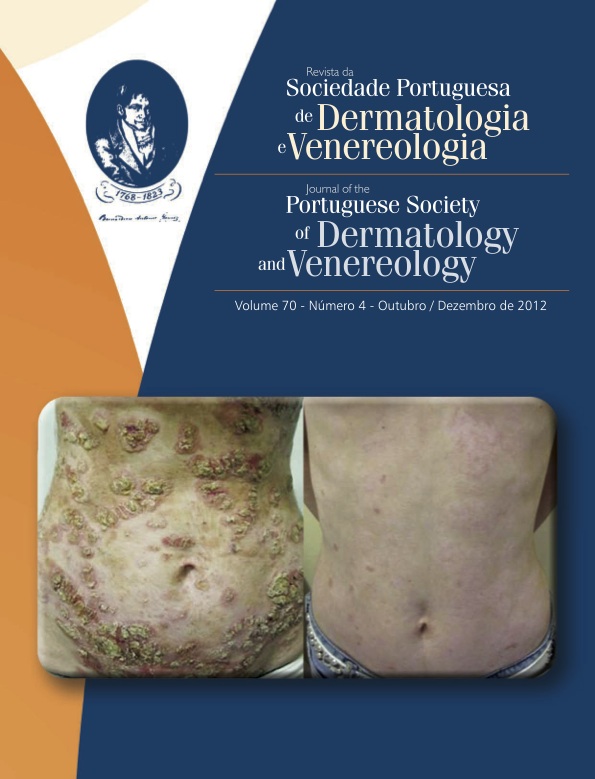CUTANEOUS MASTOCYTOSIS IN CHILDHOOD – RETROSPECTIVE STUDY OF 32 PATIENTS
Abstract
Introduction: Mastocytosis is a broad term that includes a set of clinically distinct entities characterized by the accumulation of mast cells in tissues. The skin is the organ most frequently involved. There are four clinical pat- terns of cutaneous mastocytosis: urticaria pigmentosa (UP), diffuse cutaneous mastocytosis, mastocytoma and telan- giectasia macularis eruptiva perstans. In childhood, the disease is usually limited to the skin. Material and Methods: Retrospective study of patients with cutaneous mastocytosis of the Pediatric Dermatology Outpatient Clinic at Hospital de Curry Cabral between 2001 and 2010. Results: Thirty-two patients were included (20 male and 12 female). In 90.6% of the cases, the manifestations began before two years of age. Only urticaria pigmentosa (53.1%) and mastocytomas (46.9%) were observed. The trunk and proximal portion of the limbs were the preferred locations. Darier ́s sign was pre- sent in 87.5% of cases (94.1% of UP and 80% of mastocytomas). The associated manifestations were pruritus (40.6%), blistering (28.1%), flushing (18.8%) and dermographism (12.5%). There were no cases of systemic mastocytosis. Two patients had a family history of cutaneous mastocytosis. No significant laboratory abnormalities were detected. In the 16 cases determined, serum levels of alpha-tryptase were within normal range. Discussion: These results are consistent with the literature, particularly in relation to common clinical forms, the usual locations, high frequency of Darier ́s sign and early age of onset. Once determined, the serum levels of alpha-tryptase were normal, which is consistent with the absence of systemic involvement. The higher prevalence in males has been reported before.
KEYWORDS – Mastocytosis, cutaneous; Child.
Downloads
All articles in this journal are Open Access under the Creative Commons Attribution-NonCommercial 4.0 International License (CC BY-NC 4.0).








